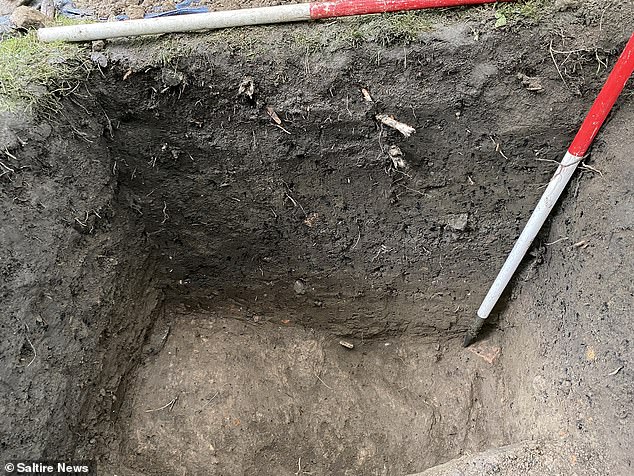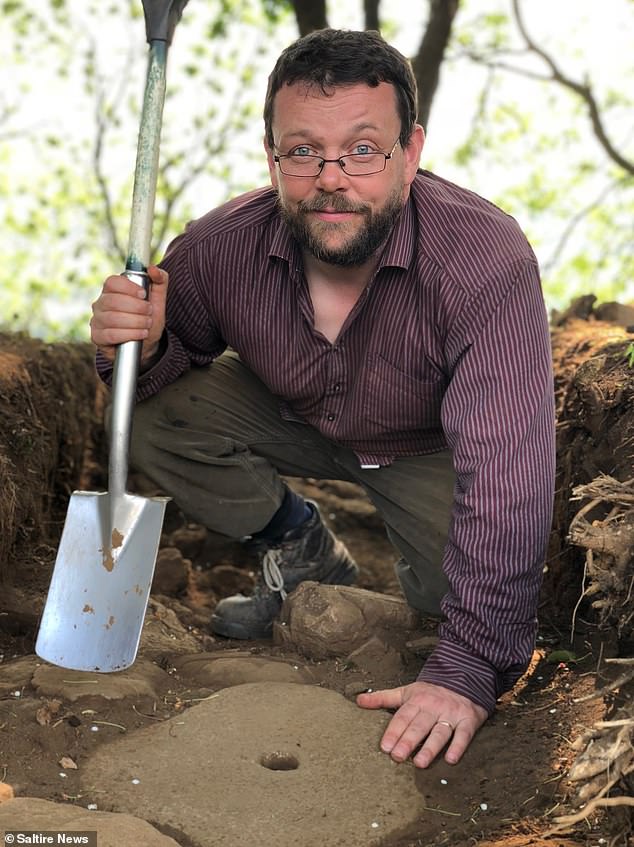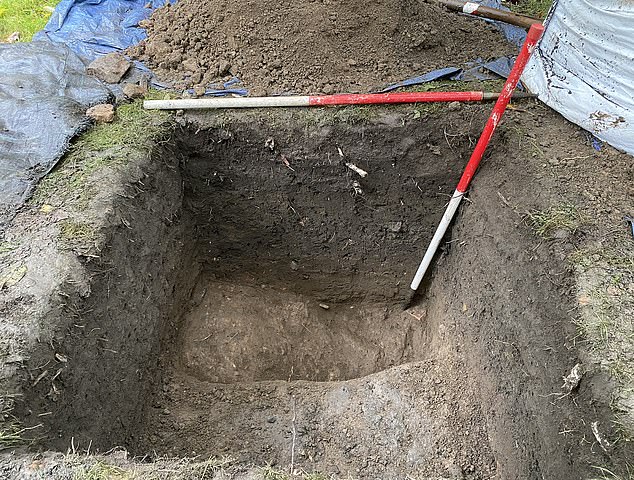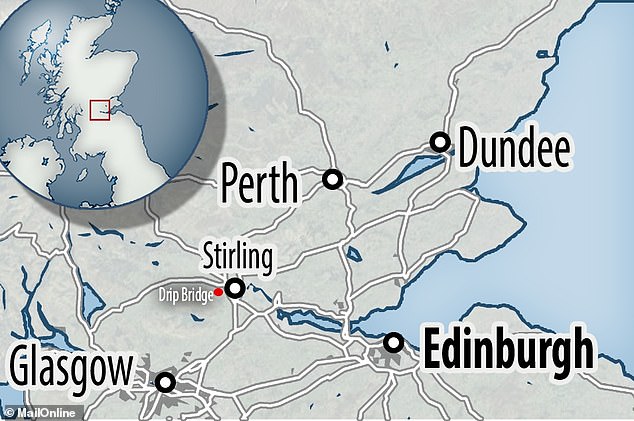EXCLUSIVE: Mapping the ‘most important Roman Road in Scottish history’: Incredible chart reveals the route travelled by historical figures including William the Conqueror and Oliver Cromwell 2,000 years ago
>
It has been called “the most important road in Scottish history”, having been used by the likes of Henry VIII, William the Conqueror and Oliver Cromwell.
Now, MailOnline can exclusively reveal where the 2,000-year-old road begins and ends, thanks to a detailed map drawn up after the cobblestone road was discovered in a park near Stirling.
Archaeologists say it was built by the Roman armies of General Julius Agricola in the first century AD, and it could have been connected to a ford across the River Forth.
The route would have been used by many key historical figures in Scottish history and wider British history for military campaigns, given its strategic importance for crossing the River Forth and reaching the Highlands, as well as its proximity to Stirling – Scotland’s former capital.
They included Robert the Bruce and every king and queen of Scotland, as well as the Picts, Vikings and a series of Roman legions in the 2nd and 3rd centuries AD.
REVEALED: It has been called ‘the most important road in Scottish history’, having been used by the likes of Henry VIII, William the Conqueror and Oliver Cromwell. Now, MailOnline can exclusively reveal where the 2,000-year-old road begins and ends (pictured left). Experts say it is likely just a small part of what was a much wider network stretching all the way from Aberdeenshire down to Dover in Kent (right).

History: Archaeologists say the road was built by the Roman armies of General Julius Agricola in the 1st century AD and would have been connected to a ford across the River Forth
This discovery helped confirm that the road ran west from Stirling for approximately nine miles to the village of Doon.
However, experts say this was likely just a small part of what was a much wider network stretching all the way from Aberdeenshire down to Dover in Kent, a distance of more than 620 miles.
The map also reveals the location of a number of Roman camps, as well as a Roman fort near what is now Doune Castle.
It was originally built in the 13th century before being damaged in the Wars of Scottish Independence and rebuilt about 100 years later.
The road was discovered during an exploratory excavation in the garden of the Old Inn Cottage, next to the 18th-century Old Drip Bridge, a few miles west of Stirling city centre.
Its excavation was arranged by Stirling Council archaeologist Murray Cook.
He said the road had not been maintained after the Romans left, so what was discovered was a section of eroded surface measuring 3.2 feet by 3.2 feet (1 m x 1 m).
Asked where exactly the road would run to and from, Mr Cook told MailOnline: ‘That’s a difficult question, a lot of the road network has survived to become modern roads but a lot of it has been lost.’
“This piece confirms where it went west of Stirling and we know where it went north of Don.” So, it’s like a huge puzzle with missing pieces.’
He added that the crossing would have been used by the Romans, the Picts, William the Conqueror, Oliver Cromwell and every king and queen of Scotland, including Macbeth, Kenneth MacAlpine and Robert the Bruce.
“But not Bonnie Prince Charlie, who we know crossed the river at a ford in the fur west of Stirling,” Mr Cook said.
He described the newly discovered road as “the most important road in the history of Scotland.”
“Literally walking where Wallace and Bruce went, not to mention the Romans, Picts and Vikings, is amazing,” Cook said.
“It was also never clear before this discovery where this road was.”

The cottage is a former inn built in the 17th century, and resident Jennifer Orr had no idea the ancient road was buried in her garden until he was approached by archaeologist Murray Cook (pictured). He thought the road might pass through there and arranged for excavation

The cobblestone road was built by the Roman legions of General Julius Agricola in the 1st century and would have been connected to a ford across the River Forth

The road was discovered during an exploratory excavation in the garden of the Old Inn Cottage, next to the 18th-century Old Drip Bridge, a few miles west of Stirling city centre.
“To the south, the road heads towards Falkirk and will eventually take you to England.
“To the north, a crossing will take you over the River Tay and the edge of the Roman Empire.”
The cottage is a former inn built in the 17th century, and resident Jennifer Orr had no idea the old road was buried in her garden until Mr Cook approached her.
Mrs Orr, who lives in the cottage with her family, said: “It’s amazing to think that the likes of William the Conqueror and King Henry VIII would have passed through where our garden is now – not many people can say that.”
“I’ve lived in Stirling most of my life, and you know all the great historic places in the area like Stirling Castle and the Wallace Monument, but I don’t think people appreciate all the other historical events that took place here that this discovery highlights.
“I had no idea the road could be there until Murray showed up and asked me about digging in the garden.”
“When the road was found, I couldn’t help but feel excited, especially considering its importance.”
(Tags for translation) Daily Mail
